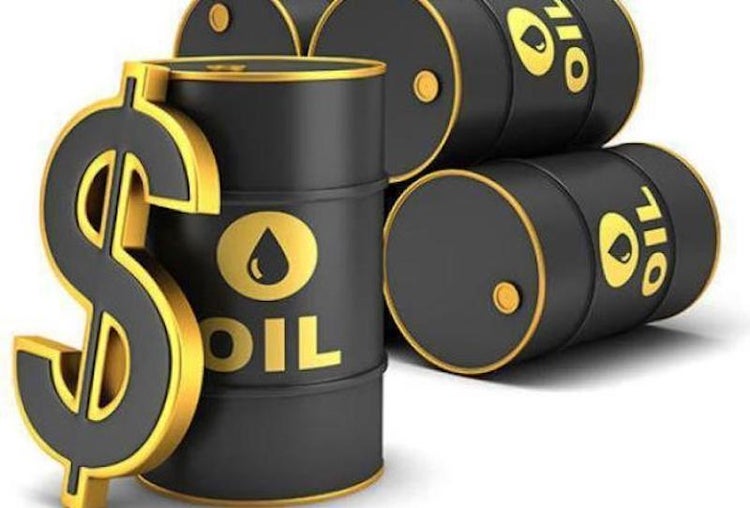U.S. West Texas Intermediate and international benchmark Brent crude oil futures are likely to firm next week after OPEC and its allies agreed to a historic production cut agreement on Friday. The reason we’re not too enthusiastic about a major breakout to the upside or change in trend is because dealmakers hit a snag and we continue to look for demand destruction.
According to reports, and agreement to cut production between OPEC and its major friends, including Russia, hit a snag after Mexico refused to agree to its share of the cuts after a grueling nine-hour marathon meeting between the parties.
The other major players know as OPEC+ earlier in the day agreed to cuts that would take 10 million barrels per day offline as the coronavirus pandemic saps demand for crude.
“A statement released by OPEC following the meeting outlined details of the cuts but notes the measures “agreed by all the OPEC and non-OPEC oil-producing countries participating in the Declaration of Cooperation, with the exception of Mexico, and as a result, the agreement is conditional on the consent of Mexico.”
Apparently OPEC+ wants Mexico to cut production by 400,000 barrels per day, but Mexico will only agree to a 100,000 barrel per day reduction for the next two months.
I expect the parties to reach a compromise over the weekend so I’m sticking with my forecast for a firm opening on Monday. The news may be enough to underpin prices over the near-term, but I don’t believe it’s significant enough to change the near-term bearish outlook. Furthermore, the markets have been pricing in a 10 to 15 million barrel production cut for weeks.

Trend Indicator
The main trend is down according to the daily swing chart, but a support base has been building over the past three weeks.
The main trend will change to up when buyers take out the last main top at $54.90. This is highly unlikely, but there are plenty of levels that need to be overcome before we even get there anyway.
A trade through $21.64 will signal a resumption of the downtrend.
50% to 61.8% Retracement Levels
For three weeks, the market has been capped by $34.04 and underpinned by $21.64. Its 50% level or pivot at $27.84 has been controlling the direction.
The short-term range is $54.90 to $21.64. Its 50% retracement level comes in at $38.27.
The main range is $63.73 to $21.64. Its 50% to 61.8% retracement zone is at $42.69 to $47. 65.
Since the main trend is down, all of these retracement zone levels are potential resistance. This is why the market is going to have a hard time changing the trend to up over the near-term.
Closed on Bullish Side of Downtrending Channel
On a positive note, June WTI crude oil is trading on the strong side of a downtrending channel that indicates a little upside momentum. The market is going to have to sustain a rally over this channel to indicate some hope for a rally.
Falling back inside the bearish price channel will indicate the return of sellers.
Near-Term Outlook
Based on this week’s price action and the current price at $28.82, the direction of the June WTI crude oil market the week-ending April 17 will be determined by trader reaction to the minor pivot at $27.84.
Bullish Scenario
A sustained move over $27.84 will indicate the presence of buyers. Taking out $34.04 will indicate the buying is getting stronger. This could trigger an acceleration to the upside with the first target the bottom of the price gap on the weekly chart at $37.15, followed by a 50% level at $38.27.
Overcoming $38.27 will be a sign of strong buying with the major target coming in at $42.69 to $47.65.
Bearish Scenario
A sustained move under $27.84 will signal the presence of sellers. Crossing to the weak side of the downtrending angle at $22.90 will put the market inside a bearish downtrending channel. This could create the downside momentum to take out the low at $21.64.
If $21.64 fails as support then look for an eventual break into the psychological support level at $15.00.

Conclusion
Due to the volatility and the uncertainty over the headlines, we have to talk about extreme upside and downside targets, but realistically the upside potential of the market is likely to be limited even if OPEC+ decides to make aggressive production cuts.
This is because of the demand destruction caused by the coronavirus. Without a solid end date to the impact of the virus, it’s just too hard for governments and companies to determine when businesses will be up and running at full force. Until then, professionals are likely to continue to sell rallies unless the data forces them to reverse their bearish outlooks.
Source: Oilprice.com





